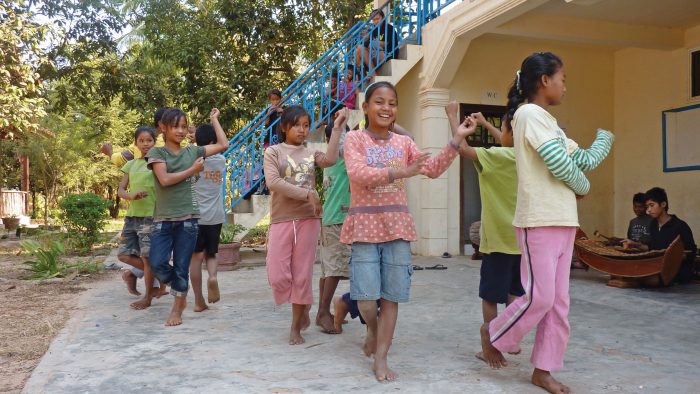 Social Sciences
Social Sciences
Inside the Orphanages

In many orphanages, the kids perform traditional dances, sometimes for donations. It gives them a sense of dignity—in Cambodia and many parts of the world, children are expected to contribute financially to their family and education.
It might seem odd to think of orphanages as anything other than homes for parentless children. It could be surprising to learn that the kids in some orphanages actually have loving parents. Stranger still, perhaps, to discover that many parents send their kids to these orphanages because they want the best for them.
But it’s all about the context.
In Cambodia, for example, the relationship between orphanages and the public might seem unusual to many Westerners. Those unfamiliar with Cambodian orphanages sometimes misunderstand them—and that can be detrimental to the kids in these facilities and those who travel from abroad to help them.
Kathie Carpenter came to this conclusion after a decade of research on Cambodia’s orphanages. The international studies professor has made a half-dozen trips to the Southeast Asian nation to study these institutions, examining the interactions between kids and tourists who volunteer there.
Cambodia is increasingly a destination for volunteers, many of whom come from the West to work in the orphanages. They often come with misconceptions about these institutions, Carpenter said—including the assumption that none of the children have parents.
Westerners generally understand orphans in this context. But in Cambodia, about three-fourths of children in the orphanages have at least one living parent.
This realization has left some volunteers feeling duped because they feel that the orphans aren’t “real,” Carpenter said; the news media has picked up on that sentiment, condemning “Scambodia” for “fake orphanages” that are merely out to draw donations from well-meaning volunteers. The bad press results in fewer volunteers and less funding.
But contrary to Western understanding of the word “orphan,” the Cambodian equivalent is closer in meaning to a “waif,” with no requirement that both of the child’s parents are deceased.
That’s one of the common misconceptions about these orphanages. Carpenter notes a few others:
The kids come from negligent homes. The opposite is often true. Cambodia’s rural regions generally lack schools; most families from those areas who place their children in orphanages do so because they believe that educational opportunities are better there, and research supports this.
The kids suffer attachment disorders. Critics of orphanage volunteering say the kids are permanently damaged by the cycle of forming and breaking bonds with volunteers who leave after weeks or months. But attachment disorder is not a risk for children placed in institutions after age 5, which is usually the case in Cambodia, Carpenter said. The children may become fond of volunteers and feel sad when they leave, she said, but it’s not accurate to call this “attachment disorder” or to assume that it is inevitably harmful.
Untrained volunteers shouldn’t teach English. Volunteers often teach orphans English formally or through conversation, drawing criticisms that they lack the training or should instead help Cambodian English teachers further their skills. But Carpenter found that kids pick up English quite well through the volunteers.
The kids are being exploited. In many orphanages, the children perform traditional dances for volunteers, sometimes for donations. Critics have likened this to animals performing in a circus, but that reflects a cultural misunderstanding. In Cambodia and many parts of the world, children are expected to contribute financially to their family and education and doing so gives them a sense of dignity.
Playing with the kids isn’t helpful. Playing with orphans is one of the most popular volunteer activities but some child advocates say the adults’ time is better spent teaching kids or helping with projects. But research suggests that kids benefit from play with adults.
“Interacting with the kids is an extremely popular activity for volunteers,” Carpenter said. “Those interactions can be mutually beneficial. But that hinges on an understanding of the orphanages and the assumptions we bring to them.”
—Jim Murez
Photo credit: Kathie Carpenter


 Twitter
Twitter Facebook
Facebook Forward
Forward